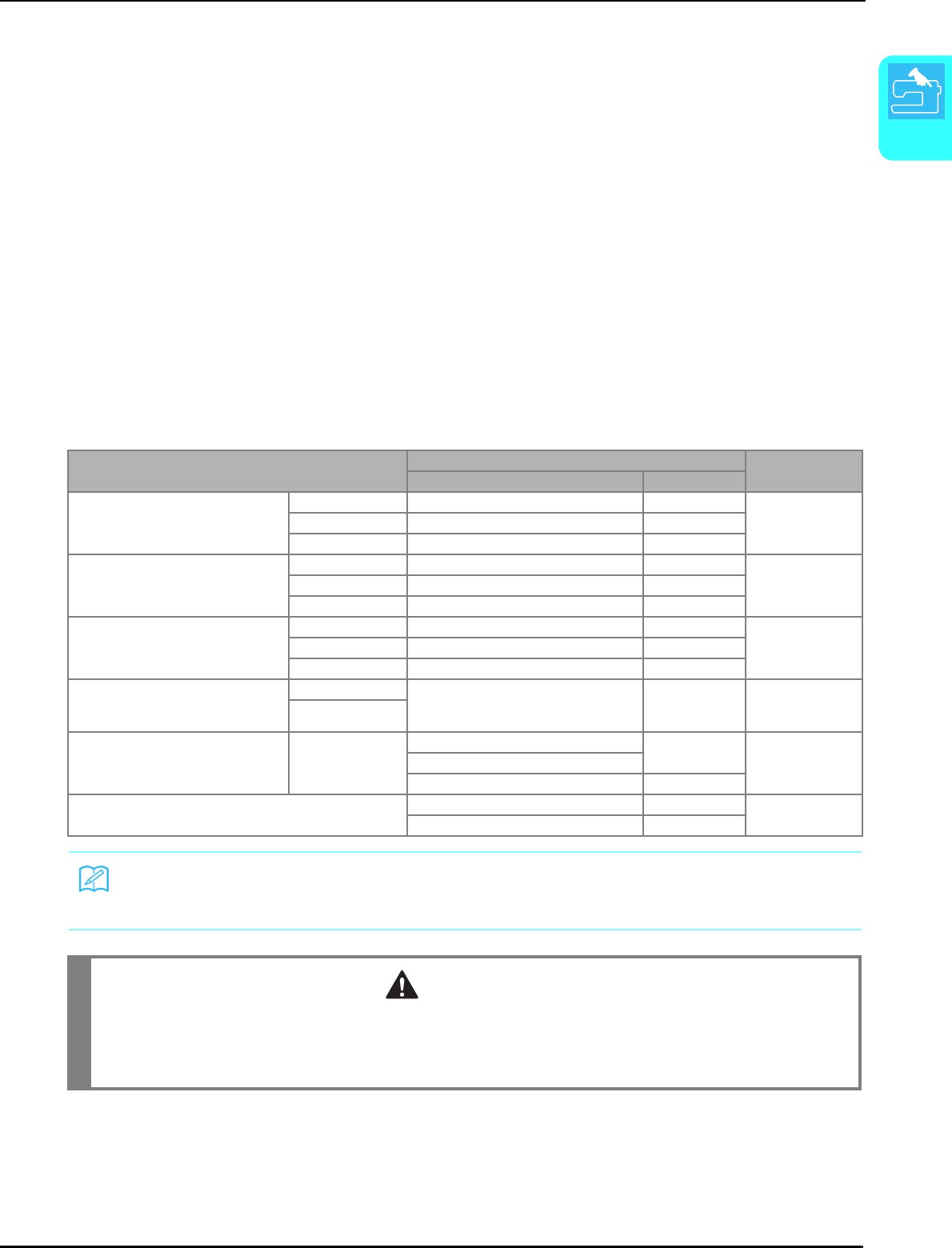
CHANGING THE NEEDLE
Getting Ready
41
1
■ About the Needle
The sewing machine needle is probably the most important part of the sewing machine. Choosing the proper
needle for your sewing project will result in a beautiful finish and fewer problems. Below are some things to keep
in mind about needles.
• The smaller the needle number, the finer the needle. As the numbers increase, the needles get thicker.
• Use fine needles with lightweight fabrics, and thicker needles with heavyweight fabrics.
• To avoid skipped stitches, use ball point needle (golden colored) 90/14 with stretch fabrics.
• To avoid skipped stitches, use ball point needle (golden colored) 90/14 when sewing character or decorative
stitches.
• Use needle 75/11 for embroidery. Use ball point needle 75/107 for embroidering patterns with short jump
stitches such as alphabet characters when the thread trimming function is turned on. Ball point needles
(golden colored) 90/14 are not recommended for embroidery, as they may bend or break, causing injury.
• It is recommended that a 90/14 needle should be used when embroidering on heavyweight fabrics or
stabilizing products (for example, denim, puffy foam, etc.). A 75/11 needle may bend or break, which could
result in injury.
• A home sewing machine needle 75/11 is inserted in the sewing machine.
■ Fabric/Thread/Needle Combinations
The following table provides information concerning the appropriate thread and needle for various fabrics.
Please refer to this table when selecting a thread and needle for the fabric you wish to use.
Fabric Thread Size of needle
Type Size
Medium weight fabric Broadcloth Cotton 60 - 80 75/11 - 90/14
Taffeta Synthetic mercerized 60 - 80
Flannel, Gabardine Silk or silk finished 50
Lightweight fabric Lawn, Batiste Cotton 60 - 80 65/9 - 75/11
Georgette Synthetic mercerized 60 - 80
Challis, Satin Silk 50
Heavyweight fabric Denim Cotton 30 - 50 90/14 - 100/16
Corduroy Synthetic mercerized 50
Tweed Silk 50
Stretch fabric Jersey Thread for knits 50 - 60 Ball point needle
(golden colored)
75/11 - 90/14
Tricot
Easily frayed fabrics Cotton thread 50 - 80 65/9 - 90/14
Synthetic thread
Silk thread 50
For top stitching Synthetic mercerized 30 90/14 - 100/16
Silk 30
Memo
For transparent nylon thread, always use needle 90/14 - 100/16.
The same thread is usually used for the bobbin thread and upper threading.
CAUTION
• Be sure to follow the needle, thread, and fabric combinations listed in the table. Using an improper
combination, especially a heavyweight fabric (i.e., denim) with a small needle (i.e., 65/9 - 75/11), may
cause the needle to bend or break, and lead to injury. Also, the seam may be uneven, the fabric may
pucker, or the machine may skip stitches.


















